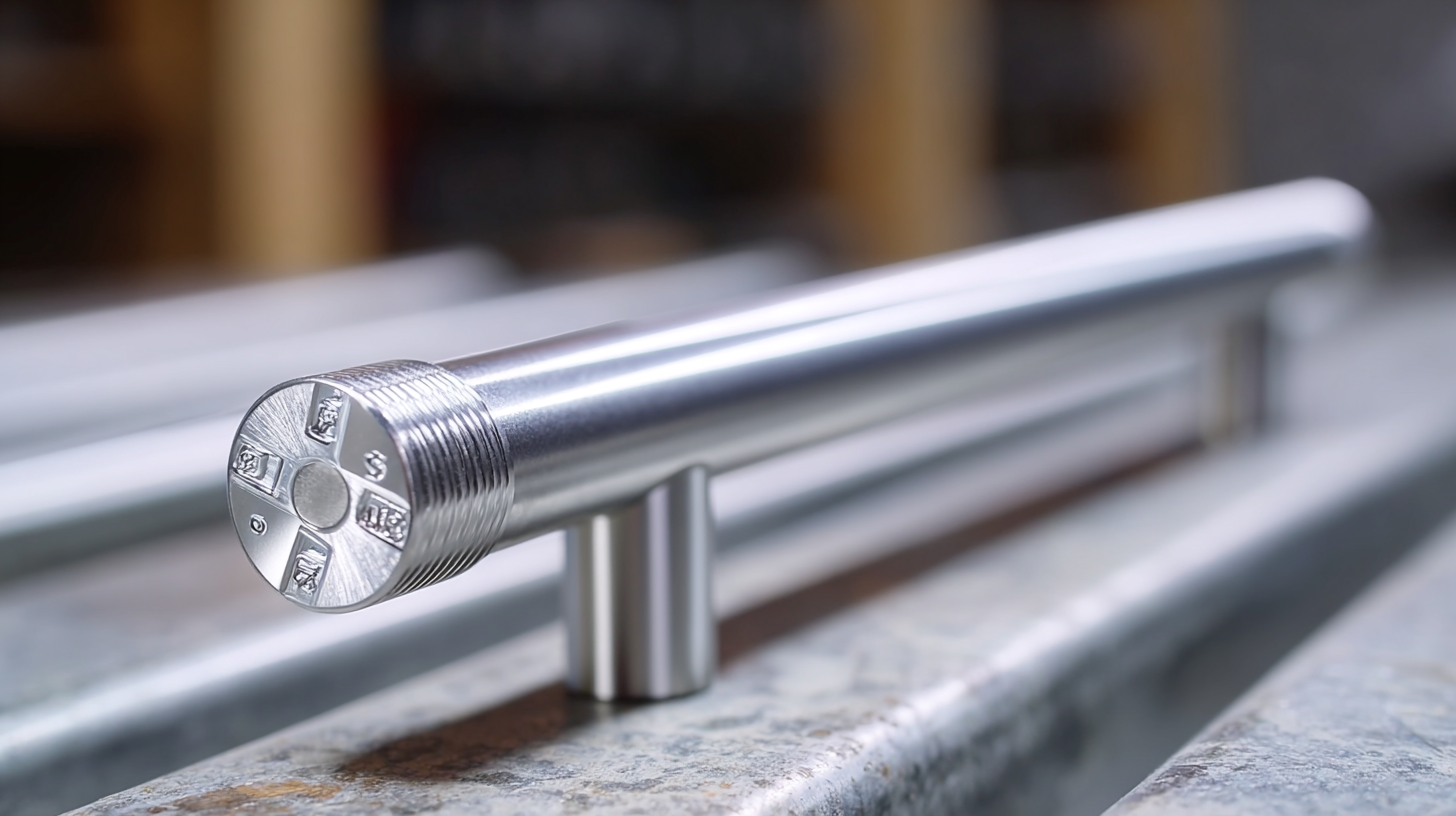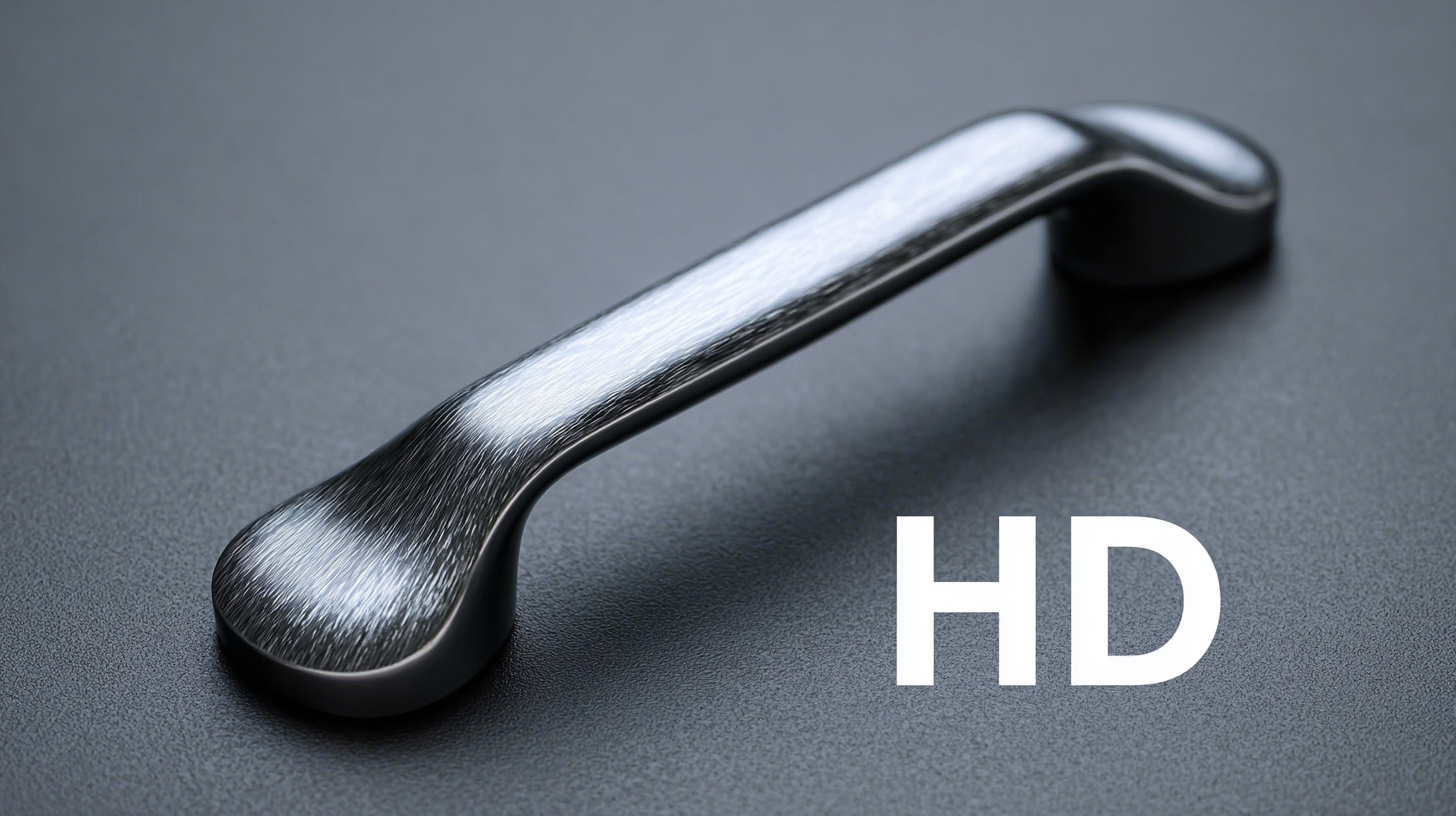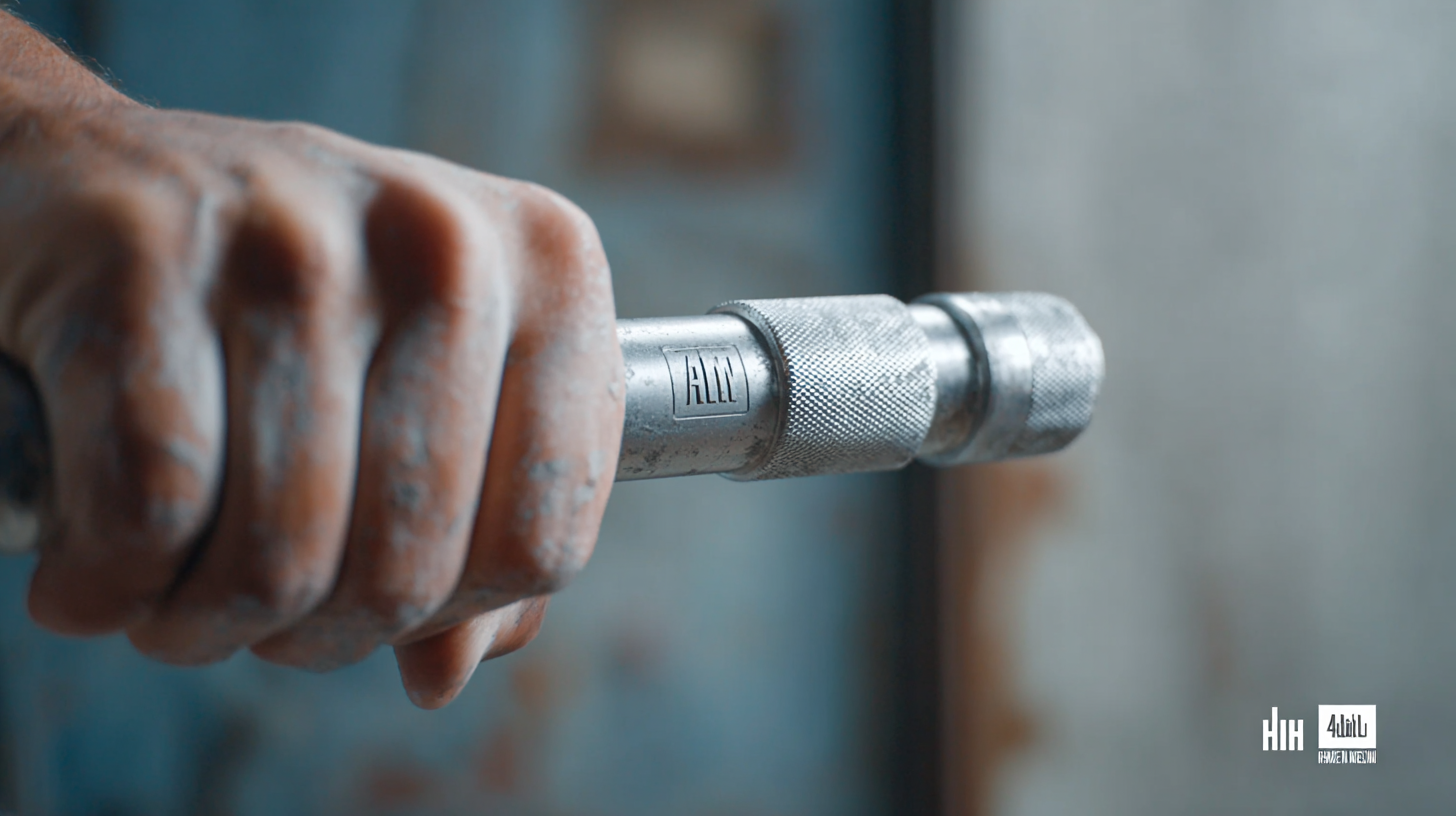Leave Your Message
When selecting the best Aluminum Handle for your business needs, it is crucial to consider not only the product's quality and functionality but also the after-sales service advantages and maintenance costs associated with it. Aluminum Handles are widely recognized for their durability and versatility, making them an excellent choice for various applications. However, the performance and longevity of these handles can significantly depend on the support provided after the purchase and the costs involved in their upkeep. Understanding the balance between the initial investment and potential repair or service expenses can aid businesses in making informed decisions that align with their operational objectives. This blog will delve into key factors to consider when choosing Aluminum Handles, emphasizing the importance of after-sales service and how it impacts overall business efficiency and cost management.

When selecting an aluminum handle for industrial use, there are several critical factors to consider to ensure optimal performance and durability. One of the most significant aspects is the handle's weight-bearing capacity, which should align with the demands of your specific application. According to a recent industry report by the Aluminum Association, aluminum handles can support loads ranging from 300 to 500 pounds, depending on their design and thickness. Assessing the load requirements will help in choosing a handle that can withstand the operational pressures in your business.

Another factor to consider is the corrosion resistance of the aluminum handle. Industrial environments often expose materials to harsh chemicals and moisture, which can lead to deterioration. A study published in the Journal of Materials Engineering emphasized that anodized aluminum handles significantly increase corrosion resistance compared to standard finishes. This protective layer not only prolongs the handle's lifespan but also maintains its aesthetic appeal. Investing in high-quality, corrosion-resistant aluminum handles can lead to cost savings on replacements and repairs in the long run.
When selecting aluminum handles for your business, it's crucial to understand the different types available and their specific applications. Aluminum handles can be categorized into several types, including ergonomic, pull, and locking handles, each designed for unique functionalities. For instance, ergonomic handles are particularly popular in industries that require comfort and prolonged use, as they reduce fatigue and enhance productivity. According to a report by Industry Week, ergonomic tools have been shown to increase worker efficiency by 15% over standard designs.
Moreover, locking handles are essential in applications where security is paramount, such as in manufacturing facilities and warehouses. A study by Grand View Research highlighted that the demand for secure locking mechanisms has surged, driven by increasing industrial theft and the necessity for compliance with safety regulations.
Additionally, pull handles are commonly utilized in commercial settings, particularly in kitchen and retail environments, due to their ease of use and ability to withstand heavy use. Each of these handles serves a distinct purpose, emphasizing the importance of choosing the right type based on operational requirements.
When selecting an aluminum handle for your business, it's crucial to focus not only on durability and aesthetics but also on ergonomics and user comfort. According to a report from the Ergonomics Society, improperly designed handles can lead to musculoskeletal disorders in up to 60% of users, emphasizing the need for thoughtful design. Features such as grip size, shape, and material can significantly influence user experience. For instance, handles designed to fit the natural curvature of the hand have been shown to reduce strain and increase productivity by up to 30%, promoting healthier work practices.

Moreover, the impact of handle design extends beyond individual comfort to overall operational efficiency. A study published in the Journal of Occupational Health found that ergonomic handles can decrease the risk of repetitive strain injuries, which currently account for over $20 billion in worker compensation costs annually. This makes investing in high-quality, ergonomic aluminum handles not just a matter of employee well-being but also a strategic financial decision for businesses, highlighting how crucial handle selection is for both ergonomics and long-term productivity.
When selecting aluminum handles for business needs, it's essential to conduct a comparative analysis against alternative materials such as plastic or stainless steel. According to the National Institute of Standards and Technology (NIST), aluminum boasts a remarkable strength-to-weight ratio that provides durability without the bulk, making it ideal for high-usage environments. Aluminum handles are significantly lighter—about one-third the weight of stainless steel—yet offer comparable strength, which can enhance operational efficiency in various manufacturing and service settings.
Additionally, research from the Aluminum Association highlights the corrosion resistance of aluminum compared to other materials. Aluminum undergoes an electrochemical reaction that forms a protective oxide layer, ensuring that handles maintain integrity over time, even in humid or corrosive environments. In contrast, while stainless steel may provide some resistance, its susceptibility to rusting and maintenance demands can lead to higher long-term costs. This advantage, coupled with aluminum's recyclability, positions it as a sustainable choice for businesses aiming to reduce their environmental footprint while maximizing functionality. Choosing aluminum handles can not only improve product performance but also align with modern sustainability practices.
When evaluating aluminum handles for business needs, it's crucial to consider their long-term cost efficiency. According to a recent industry report by the Aluminum Association, aluminum products can save businesses up to 30% in energy costs over their lifespan due to their lightweight and durability. Furthermore, the longevity of aluminum handles—often exceeding 20 years with proper care—means companies can reduce replacement frequency and associated costs.
**Tip:** When selecting aluminum handles, assess their weight-to-strength ratio. Opting for handles that retain strength while minimizing weight can lead to further savings in shipping and handling, thus impacting overall expenditure.
Investing in quality aluminum handles might come with a higher upfront cost, but the total lifecycle cost, including maintenance and replacement, tends to favor these durable materials. Industry analysis suggests that businesses can realize a return on investment within three to five years when opting for high-quality aluminum over cheaper alternatives.
**Tip:** Conduct a lifecycle cost analysis before making a decision. This will provide a clearer picture of long-term savings and help justify the investment in higher-quality products.
| Type of Aluminum Handle | Cost per Unit (USD) | Expected Lifespan (Years) | Maintenance Costs per Year (USD) | Total Cost Over 10 Years (USD) |
|---|---|---|---|---|
| Standard Aluminum Handle | $5.00 | 10 | $50.00 | $100.00 |
| Heavy Duty Aluminum Handle | $10.00 | 15 | $30.00 | $120.00 |
| Lightweight Aluminum Handle | $3.00 | 5 | $20.00 | $100.00 |
| Ergonomic Aluminum Handle | $7.50 | 10 | $25.00 | $100.00 |
